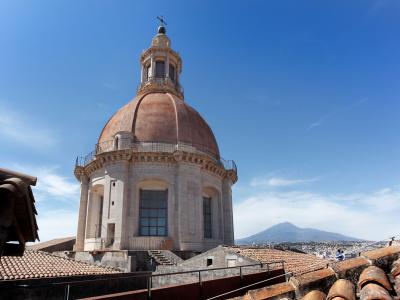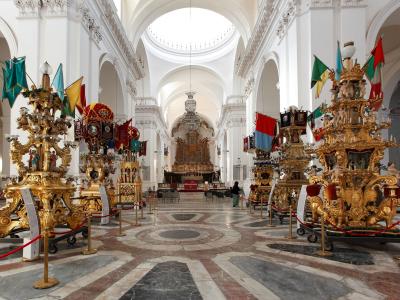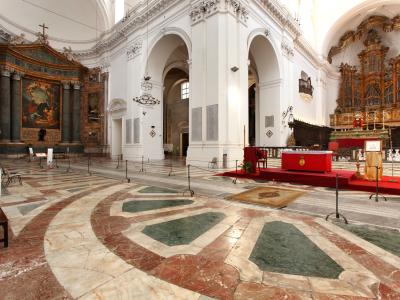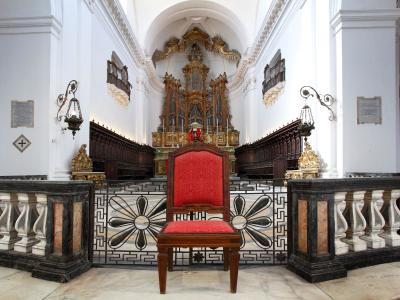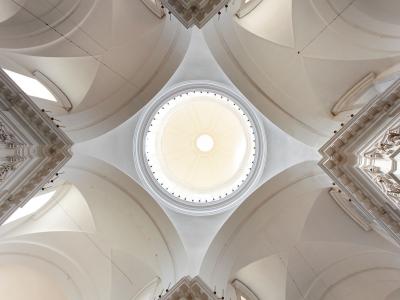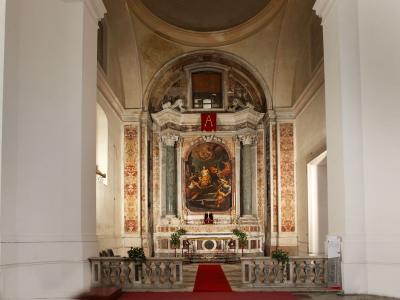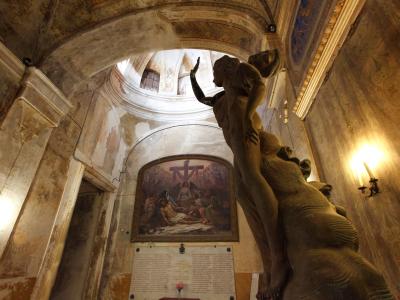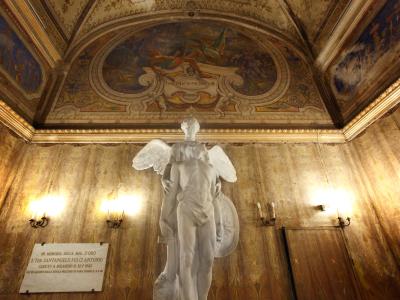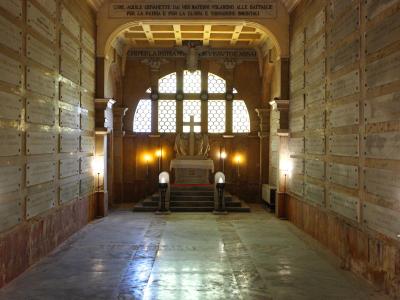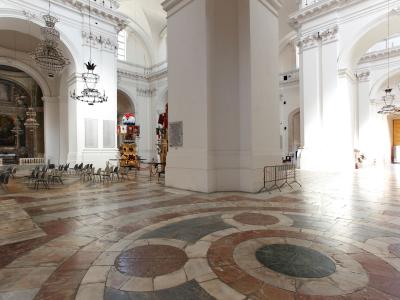Thelarge church of St. Nicholas, which was inspired by Roman architecturalmodels , was begun in 1687 to a design by G.B. Contini. After the 1693 earthquake, work was carried on by several architects, including Francesco Battaglia and Stefano Ittar; the latter built the 62-meter-high dome : the elevation, as can be seen from the unfinished pairs of columns, remained unfinished (1796); technical difficulties and serious economic problems were among the main reasons for the interruption of work.
Theinterior of the church has a nave and two aisles and reaches a length of 105 meters; what is striking is the grandeur of the architectural partitions and the clear diffused light that penetrates from the high windows.
In the left and right aisles are semicircularchapels preceded by elegant balustrades. On the right: chapel of St. Gregory Pope with a canvas by Camuccini; chapel of St. John the Baptist with a canvas by the Roman Tofanelli; chapel of St. Joseph with a canvas by Mariano Rossi of Messina.
On the left: chapel of St. Andrew with a canvas by F. Boudard; chapel of St. Euplius with a canvas by Nocchi; and chapel of St. Agatha with a large canvas by M. Rossi. At the ends of the horizontal arm of the Latin cross are two chapels: on the right is the one dedicated to St. Nicholas of Bari and, on the left, that of St. Benedict. In the center of the presbytery area stands out the large high altar made of precious materials, all around are the wooden choir stalls carved by the Palermo-born Nicolò Bagnasco.
But the work that had, in the past, given the church themost luster was the celebrated organ by Donato del Piano.
In an 1899 guidebook of Catania we read, " This wonderful machine alone issufficient for the celebrity of the Benedictine monastery of Catania. It was the work of Abbot Donato del Piano and all string and wind instruments are exactly imitated in it : it has 72 registers, five orders of keyboards, 2,916 pipes. One hears from the piccolo to the serpentone, from the violin to the double bass, from the rolling and beating drum to the pastoral bagpipe.
There is nothingmore solemn, more profound, more majestic than the shelves that the most perfect orchestra could not produce. "Even the writer Wolfgang Goethe, on his Visit to Catania (1787), went to see this marvel: "We went into the immense church," he wrote, "and the friar handled the magnificent instrument, making the most recondite corners sigh with the lightest breath or rattle with the most powerful thunder. Today this masterpiece no longer exists because all its parts have been barbarically looted. Also worthy of special attention is the large 39-meter-long sundial. It was made, in 1841, by astronomers Wolfrang Sartorius Baron Waltershausen of Göttingen and Prof. Christian Peters of Flensburg. The solar spectrum passes through it with a larger diameter in winter of 938 millimeters and smaller in summer of 28 millimeters, without the penumbra.
The height of the gnomon above the sundial line is 23 meters and 895 millimeters. On the sides of the marble slabs with Zodiac figures, various information about the sundial can be read.
Virtual Tour
Map
S. NICOLO' L'ARENA
Esedra di Piazza Dante, Piazza Dante Alighieri, 12, 95124 Catania CT, Italia
Information
MON
MAR
WED
THU
FRI
SAT
dalle 09:00
alle 19:00
Sundays and holidays
dalle 09:00
alle 13:00
Prezzo:





